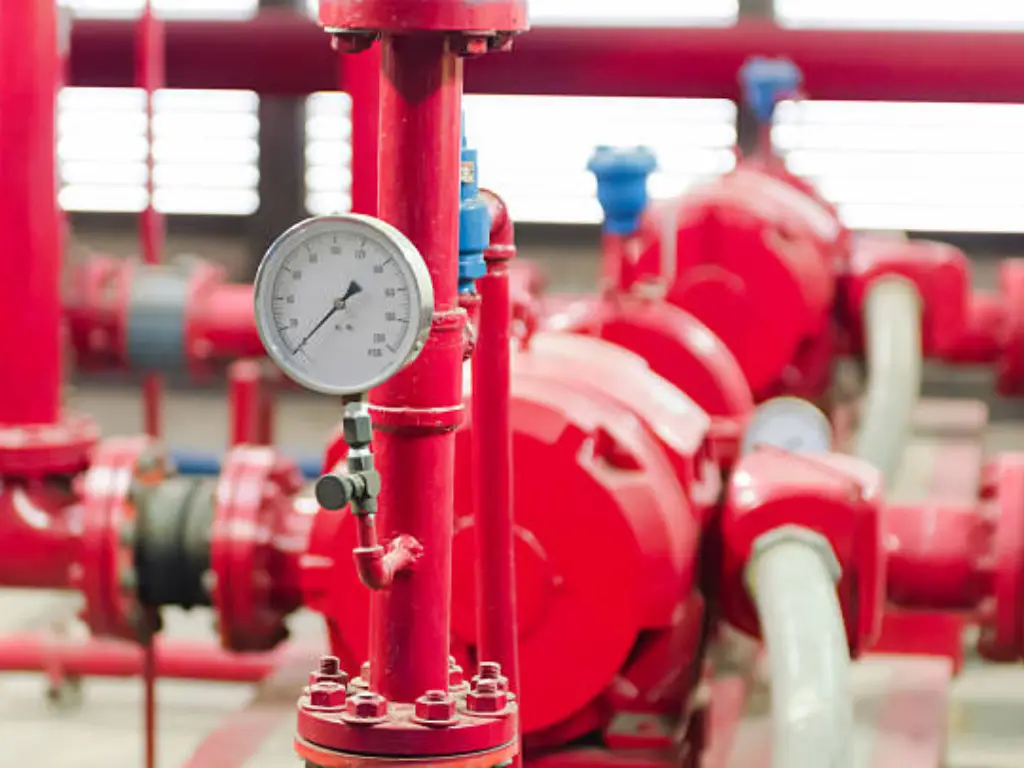
What Are Valve Markings and Why Are They Important?
Different types of valves have their valve markings which are helpful in designating them apart. These marks display important data concerning the valvular qualities like pressure or temperature limits, body material and industry compliance that enable one to understand what they are about. Consequently, it is necessary for someone to know the meaning of these valve markings . This will guide him in making a choice on what type of valve he will use depending on where it will be used, such as gas pipelines and water mains or industries.
The Importance of Valve Markings
Standardized codes, known as valve markings, emphasize the important details regarding a valve’s abilities and limitations in accordance to safety and performance requirements, such as those set by ISO and ANSI. By interpreting these marks correctly, one can avoid mismatches and ensure engineers’ and users’ confidence in the system. Moreover, UL and CSA certifications imply that the valve has gone through certain tests and meets various standards, further demonstrating the significance of these marks with respect to dependability and security.
Common Valve Markings: WOG, CWP, WSP

Valves are identified by several important markings that indicate their specifications and capabilities. Among the most frequent of these marks are WOG, CWP, and WSP. The functional limitations and appropriate use cases for each valve can be understood through these marks.
WOG (Water, Oil, Gas):
- WOG is an abbreviation for water oil gas and it denotes the valve’s pressure class for these three types of media. This wide-ranging classification makes sure that a wide range of fluids can run through this component without any hitching. A reliable measure showing how much versatility this piece exhibits regard of these three fluid categories would be indicating the highest pressure it could safely tolerate while serving with them; hence WOG gives an insight into how flexible and tough this device is.
CWP (Cold Working Pressure):
- The CWP stands for the maximum pressure a valve can withstand at atmospheric temperature. This rating guarantees that the valve remains operational under high pressures in the cold, which is paramount when handling cryogenic fluids. For instance, in environments where fluids are at or near freezing temperatures, the valve must remain intact and its performance should not be compromised because CWP is an important criteria.
WSP (Working Steam Pressure):
- On the other hand, WSP (also abbreviated as SWP) shows how much steam pressure a given valve can accommodate. Applications that contain steam lines like for example those involving high temperatures require this rate. A good engineering design will ensure that there are valves that can take up to maximum allowable steam pressure thereby maintaining safety and effectiveness of steam based systems.
The above mentioned symbols help one choose the correct ball/gate valves according to their application specifications ensuring that they don’t fail at required pressurization & temperature conditions.
How to Read and Interpret Valve Size Markings
Valve size markings are one of the important markers for identifying valves. Normally, these indicate the nominal pipe size of a valve which corresponds to the diameter of that pipe the valve is built to fit. The valve’s pipe size is frequently marked in inches or millimeters and can be found stamped on the valve body; other details include a model number for purposes of manufacturer identification.
For example, a marking such as “1/2” would reveal that the valve fits half-inch pipes. Understanding these size indications is critical to ensuring proper fitment into piping systems like water mains and gas piping systems. These sizes are interpreted correctly so that there are no leaks and optimal flow rates are maintained in this system.
Furthermore, while some valves have markings indicating their ball sizes, others do not. This relates to how much fluid it can carry when it is turned on or off due to its larger or smaller opening. Correctly identifying and matching the valve size with the pipe size is essential for maintaining system integrity and performance.
Pressure Ratings: Understanding PSI, PN, and Gas Ratings

Pressure ratings are fundamental to the safe operation of valves. The most common pressure ratings are given in PSI (pounds per square inch) or PN (pressure nominal). These ratings indicate the maximum working pressure the valve can withstand, also known as the PSI rating. For example, a valve marked with a “150 PSI” rating can handle a maximum pressure of 150 pounds per square inch.
The gas rating is another important marking, especially for gas applications. It specifies the maximum gas pressure the valve can safely handle. This is particularly vital in systems dealing with combustible gases, where improper pressure ratings could lead to dangerous situations.
Understanding these pressure ratings ensures that the selected valve can operate safely under the required conditions, preventing failures due to overpressure. It’s essential to consider these ratings when selecting valves for different applications to maintain safety and functionality.
Material Codes: Identifying Valve Body Materials
Material codes are given to valve bodies indicating the type of material, thereby giving an idea about the valve’s make and its suitability in different environments. Made from materials such as stainless steel, bronze and other alloys. For instance, stainless steel ball valves are resistant to corrosion, thus suitable for demanding conditions. Determining the material of construction of a valve body is important in order to ensure compatibility with fluids and gases passing through the system. In some cases, water applications may require a bronze ball valve but not certain chemicals. Material codes are useful in selecting the right valve that will operate over time without compromising safety.
These codes can often be standardised and may include information on how well it withstands high temperatures as well as pressure. Understanding these codes guarantees that the material used in making of this kind of a valve complies with specific needs of an application hence reliability as well as durability.
Quality Assurance: Recognizing Certification Markings

Valve certification markings are essential in ensuring that the valves meet specific industry standards and regulations such as those of the United States. The most common certifications include the UL logo and CSA marks which indicate that valve has been tried, tested, and approved by known safety organizations. By these certifications users can then be assured that stringent quality and safety requirements of both the US and Canada have been met.
Certification marks also include having complied with theUniform Plumbing Code (UPC) and Canadian Uniform Plumbing Code (cUPC). These markings guarantee that valves are suitable for different countries while conforming to local requirements, particularly in the USA and Canada. This is an imperative thing to note about these certifications because it assures you that your valve is good enough.
Valves bearing certification markings have undergone rigorous testing to ascertain their performance under given conditions. This ensures that it will operate properly, thus offering reliability as well as security in different applications.
Choosing Dombor Valves: Quality, Reliability, and Quick Delivery for Global Projects

Understanding valve markings can be tough, but choosing the appropriate valves is essential for smooth operations. It is in this domain that Dombor Valves stands out as the best with exceptional quality and reliability.
It has a longer warranty period of 24 months compared to 12-18 month warranties by other firms, indicating high product longevity. For projects that have strict timelines, they hold stock of 20,000 partially completed valves meaning that delivery can be made within ten days of purchase. As part of its quality control procedure Dombor tests for mechanical and chemical properties, X-rays and performance conforming to API. The HVOF technology further improves the precision and hardness on sealing surfaces that help in enhancing corrosion resistance. They offer a wide range of materials and configurations based on API as well as ASTM regulations for operation in hostile environments. It is an internationally recognized valve brand with more than 3000 ongoing projects spanning over 140 nations with several API certifications ensuring top quality assurance.
Opting for Dombor Valves implies ensuring better performance, dependability and aligning to your operational needs as backed up by a partner.









